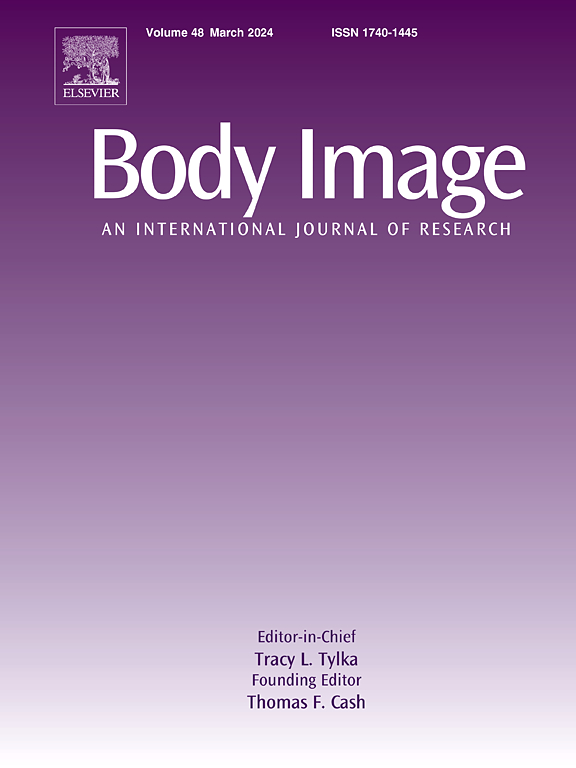在女性和男性中,有问题的色情使用与身体不满之间的双向正相关:匈牙利年轻人在一年纵向研究中的发现
IF 5.4
1区 心理学
Q1 PSYCHIATRY
引用次数: 0
摘要
先前的研究已经建立了色情使用和身体不满(BD)之间的积极联系。然而,先前的实证研究发现,当考虑到不同形式的色情使用(例如,色情使用频率或问题色情使用)或潜在的性别差异时,色情使用与双相障碍之间的关联并不一致。鉴于有问题的色情使用(PPU,失去控制的负面后果)不同于一般的色情使用,PPU和BD之间的联系需要进一步使用纵向设计和大样本进行研究,这是目前文献所缺乏的。鉴于这些局限性,本研究在匈牙利年轻人样本中横断面和纵向检查了PPU和BD之间的关系。在2801名成人样本中(年龄为28岁,SD = 4.75,男性占47.69 %,女性占52.30 %),我们采用多组方法进行自回归交叉滞后分析。根据研究结果,在男性和女性中,较高水平的PPU与较高的BD呈横断面相关。纵向上,我们也观察到男性和女性PPU和BD之间的双向正相关。基于目前的发现,临床医生应该在表现出PPU症状的个体中实施系统的BD症状筛查程序。同样,患有双相障碍的个体也应接受PPU评估。这种双重筛查方法将使及时干预和制定综合治疗计划成为可能。本文章由计算机程序翻译,如有差异,请以英文原文为准。
Bidirectional positive associations between problematic pornography use and body dissatisfaction in women and men: Findings among Hungarian young adults in a one-year longitudinal study
Previous studies have established a positive link between pornography use and body dissatisfaction (BD). Nevertheless, previous empirical studies have yielded inconsistent associations between pornography use and BD when taking into account different forms of pornography use (e.g., pornography use frequency or problematic pornography use) or potential gender differences. Given that problematic pornography use (PPU, out-of-control use with negative consequences) differs from general pornography use, the associations between PPU and BD warrant further examination using a longitudinal design and large sample, which the current literature lacks. Given these limitations, this study examined the associations between PPU and BD cross-sectionally and longitudinally in a sample of Hungarian young adults. Among a sample of 2801 adults (Mage = 28 years, SD = 4.75, 47.69 % men and 52.30 % women), we performed an autoregressive cross-lagged analysis with a multi-group approach. According to the findings, greater levels of PPU were cross-sectionally associated with higher BD among men and women. Longitudinally, we observed bidirectional positive associations between PPU and BD over time among men and women as well. Based on the present findings, clinicians should implement systematic screening procedures for BD symptoms among individuals exhibiting signs of PPU. Similarly, individuals presenting with BD should be assessed for PPU. This dual-screening approach will enable timely intervention and the development of comprehensive treatment plans.
求助全文
通过发布文献求助,成功后即可免费获取论文全文。
去求助
来源期刊

Body Image
Multiple-
CiteScore
8.70
自引率
28.80%
发文量
174
期刊介绍:
Body Image is an international, peer-reviewed journal that publishes high-quality, scientific articles on body image and human physical appearance. Body Image is a multi-faceted concept that refers to persons perceptions and attitudes about their own body, particularly but not exclusively its appearance. The journal invites contributions from a broad range of disciplines-psychological science, other social and behavioral sciences, and medical and health sciences. The journal publishes original research articles, brief research reports, theoretical and review papers, and science-based practitioner reports of interest. Dissertation abstracts are also published online, and the journal gives an annual award for the best doctoral dissertation in this field.
 求助内容:
求助内容: 应助结果提醒方式:
应助结果提醒方式:


